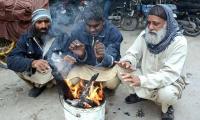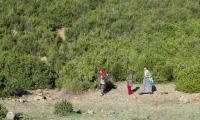The transition from a populist crusader to a pragmatic mundane routine job ends up exposing the real face of a rightwing regime tuned to the imperatives of Big Business and a warrior state surviving on borrowed money. The regime of ‘change’ now hides either behind apologies by adversaries-in-the-dock or self-convenient U-turns at the cost of original promises.
Finally, our half-revolutionary (and now former finance minister) Asad Umar came back from the scrutiny of the IMF with a stabilization injection of approximately $22 billion, including from the World Bank and the Asian Development Bank. By adding $9.2 billion from the Saudis, the Emirates and the Chinese, the Imran Khan government will surpass the five-year debt-borrowing record of the Sharif government in just three years with $31.2 billion additional external debt. This, however, doesn’t include other bilateral loans to be contracted in the next four years. The false news being spread by the PTI is that this is to pay past debts in the next three years, as if they will not be using it to meet the current account deficit. Laughable.
However, it is wrong to blame the IK government alone for its borrowing spree. It has been a standard practice ever since Pakistan joined the Western block to feed a dependent economy of a client state. This is a characteristic of our dependent neo-colonial economy, parasitic elite and client-state, which has been instrumental in perpetuating a debt-trap with diminishing rate of return while paying for the accumulated debt. The Fiscal Responsibility and Debt Limitation Act stipulated that total public debt were to be brought down to 60 percent of GDP by 2018-19, but it instead went up to 70 percent of GDP (April 2018) by the end of the PML-N government and is expected to further go up to 75 percent of GDP by the end of June 2019 due to low tax revenues and high defence expenditure. The country’s public debt rose by 10 percent or Rs2.4 trillion in the last six months of the PTI government, taking it to Rs26.637 trillion in December 2018. Successive governments have continued to accumulate public debt beyond the capacity to service it.
The debt will continue to spiral unless we address the fundamental flaws in our dependent and unsustainable economy. We will have to increase the current tax-and-saving-to-GDP ratio to around 18 percent and a much higher rate of investment. Our GDP growth must triple from the estimated 2.5 percent (by the IMF) in the next five years – close to population growth, leaving nothing to cater to the needs of a rising impoverished population.
Our imports are more than double of our inelastic exports and they must increase three-fold to not only meet the recurring current account deficit, but also to service our debts. This cannot be done without making our export-led manufacturing sector more competitive and broad-based and by bringing down costs. There is a huge gap between our incomes and expenditure due to the political economy of our power-structure.
With a very low tax-to-GDP ratio, the federal government cannot even meet its cumbersome liabilities of debt servicing and defence (Rs4 trillion) – leaving everything else out. This leads to a persistent budget deficit which is met with excessive borrowing by crowding out private investors. The federal government has no option but to expand its tax net and will have to double it to meet its responsibilities – other than debt servicing and defence.
The ‘bloody liberal’ economic formula that is going to be signed for the 14th time will again be squeezing whatever is left with the fixed-income and low-income groups. What is in the offing is: free-floating exchange rate to be determined in the free market – making the rupee even cheaper and fuelling inflation; higher utility charges, including losses, theft, payments for unutilized capacity of IPPs; reduction in the development budget without slashing non-productive expenditure, including defence and huge bureaucratic entitlements; over-taxing the taxpayers, instead of bringing the big fish into the tax net including traders, large and medium-size capitalist farmers; stemming growth by demand management and higher policy rate, increasing cost of living and perpetuating the crises real economy. We have seen in the past that structural crises remained where they were because of the exploitative and parasitic power-structure.
Essentially, this is the nature of over-developed structures of a warrior client-state that has overwhelmingly laid a heavier super-structure on a narrow and fragile economic base. ‘External threat’ or its over-projection became a necessary external condition for the perpetuation of militarization on an over-extended scale. Dependent upon the imperial patronage that incidentally boomed during the authoritarian presidential-cum-MLA periods, this developed at the cost of civilian structures.
Pakistan’s economic base could not expand due to the siphoning off of resources from the productive sectors and social services for the people. If at all the industrial base developed, it grew under state patronage with subsidies and concessions. It was essentially a consumer industry that catered to a domestic captive market, instead of export-led growth. In the absence of a vibrant industrial base, the agriculture sector continued to stagnate due to the extra-economic coercion of our landed elite.
Perhaps, we are at the fag-end of this dependent-militaristic model and it is no more sustainable in a changed strategic environment. But the greatest stumbling block in the way of breaking the shackles of this hegemonic iron structure is an inverse civil-military equation. This is going to further squeeze civilian space in all spheres that will, in turn, also compromise the capacity of the economy to sustain increasing expenditure on debt servicing and security.
It seems that Pakistan’s screws are being tightened from many sides, including by the Financial Action Task Force and the IMF. Just a few days before Prime Minister Khan’s visit to Iran, the Shia Hazaras have been attacked again by sectarian terrorism. The government’s apathy was visible when no one immediately visited the victims’ families in Quetta; they went after a few days. The latest terrorist attack also showed how active such terrorist outfits are, despite repeated vows at the state level to eliminate this scourge from our soil.
With the tightening of the noose by the FATF, on the one hand, and continuing terrorism by banned outfits, on the other, Pakistan is facing double-jeopardy. The kind of tough stabilization package about to be signed with the IMF will further lower social safety nets. The times ahead are both difficult and unpredictable. No less than the reversal of a beaten path will help stop the situation from going bad to worse.
The writer is a senior journalist.
Email: imtiaz.safma@gmail.com
Twitter: @ImtiazAlamSAFMA
There are over 11 million Pakistanis settled abroad, out of which around six million work in Gulf and Middle East
This year alone, US Treasury would have to roll-over $10 to $14 trillion in maturing short-term debt
Tear gas no longer marks just protest sites; it paints entire cities as battlegrounds but then again, PTI did it first
Political structures and governance systems have been central to economic and social development
It is confirmed now 40 Pakistanis had died after boat of migrants had capsized in sea near Greece
Many people believe that in future, AI will play an even more significant role in their lives







